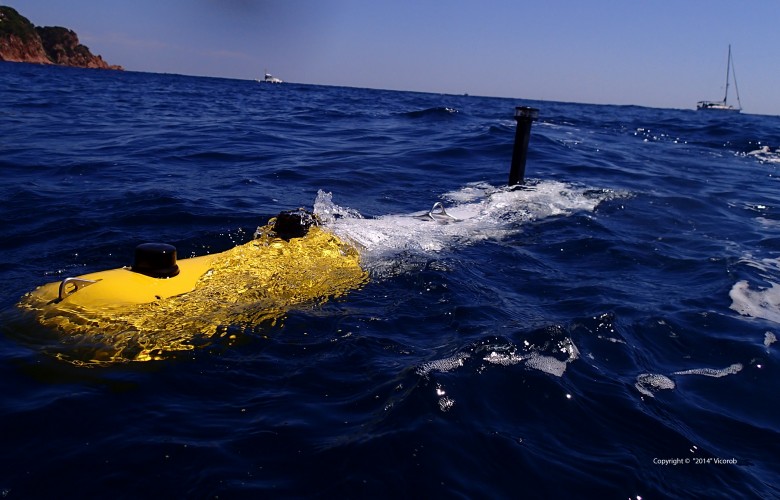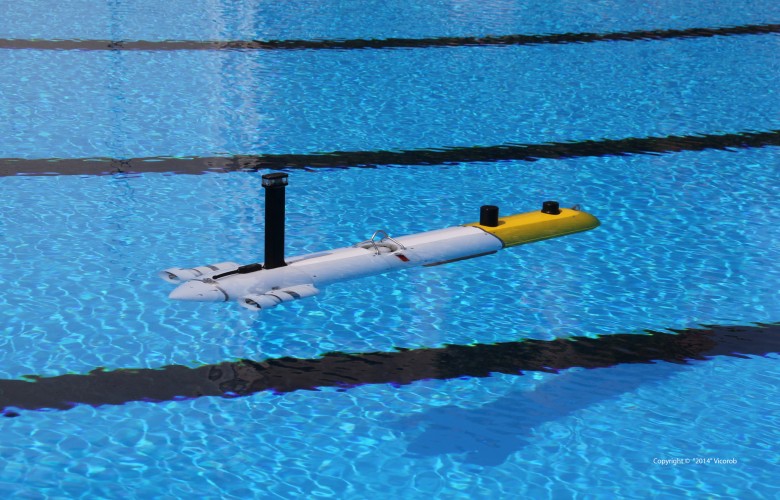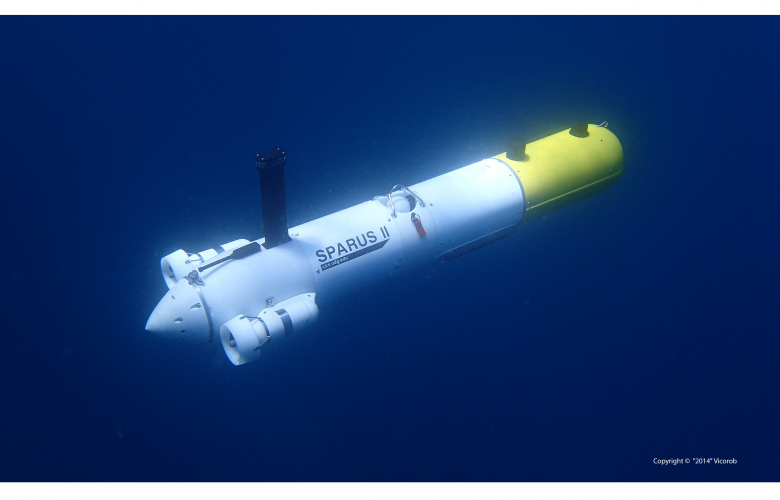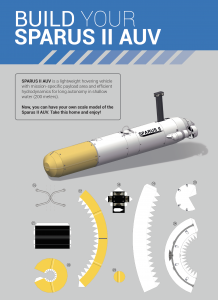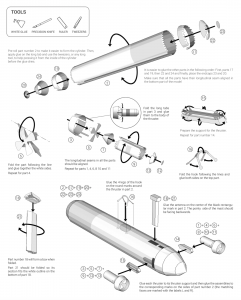•Length: 1.6 m
•Hull diameter: 230 mm
•Max width: 460 mm
•Weight in air: 52 Kg
•Maximum depth: 200 meters (certified on a pressure chamber).
•Energy: 1.4 kWh Li-Ion battery controlled by BMS
•Power control: magnetic switch
•Endurance: 8-10 hours
•Max surge velocity: 4 knots
•Propulsion system: 3 thrusters (350W, magnetic coupling, direct drive brushless DC motors) and 2 fins for pitch DoF.
•DoFs: surge, heave, pitch and yaw
•Structure: modular aluminium and acetal hull
•Computer: PCIe/104, Intel Core i7 2.20GHz Dual Core, 4M Smart Cache, 4GB DDR3 DRAM, 250GB SSD, 8 USB, 10 RS232
•LAN: Ethernet switch with wireless access point
•Software: Linux Ubuntu and ROS
•Sensors: IMU (MEMS, 6º/hr in-run bias), digital pressure sensor (30 bar, 0,15%FS accuracy) and GPS
•DVL: prepared for RDI Explorer DVL.
•Antenna: Wifi, GPS and flasher light
•Payload area: 8 liters – 7 kg in air
•Payload interface: Ethernet, RS-232 / regulated 12V and 24V / Subconn connectors.
•Communications: WiFi, umbilical cable
•Deployment: central hook for crane, front hook for towing and back hook for trolley.
•Software for simulation using UWSim and ROS
•Software for basic AUV operation: navigation, guidance and control.

